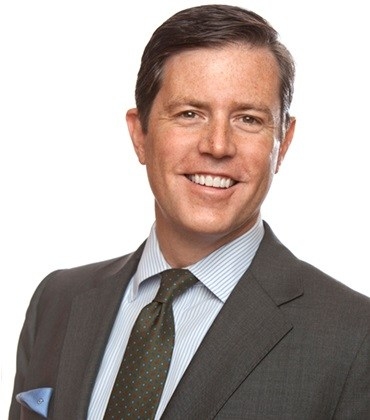Last year was an active one for physician practice mergers and acquisitions—a trend that one expert says will continue in 2018. Among the drivers: constant regulatory changes and pressure to invest in healthcare technology.
“I don’t see any reason the trend is going to slow down,” says Jeff B. Swearingen, a managing director of Edgemont Capital Partners, a healthcare-focused investment bank in New York.
Last year, was a tremendously active one for mergers and acquisitions in the physician services industry, particularly for office-based practices, Swearingen said in an interview with FierceHealthcare, in which he looked back at 2017 and provided an outlook for 2018.

RELATED: 2017's top physician practice stories include payment reform, politics and changing business models
That shouldn’t come as a surprise given the growing challenges faced by physician practices, which have been well documented in the news, he says.
A snapshot of 2017
It was another very busy year in terms of transactions in 2017, with a lot of focus on office-based services including primary care, dermatology, ophthalmology, gastroenterology and urology, Swearingen says.
A report (PDF) from the Bureau of National Affairs Health Law Reporter found there were 147 physician practices and services transactions in 2017.
Buyers included hospitals and healthcare providers, as well as private equity firms that have become increasingly aggressive over the last year or so. In many cases, buyers are purchasing multiple practices that they roll up into a larger entity, he says.
Those private equity firms have been the main buyers in office-based settings. “What’s very clear is you need to have access to capital,” he says.
Regulatory pressures fuel sales
The continued uncertainty over the direction of healthcare has been a motivating force for sellers, Swearingen says, as has the ongoing need for sufficient scale to adapt to changing regulatory and technology investment demands. He expects these trends to continue to drive transactions in 2018.
As of mid-2015, one in four medical practices was hospital-owned. And 2016 marked the first year in which physician practice ownership is no longer the majority arrangement, with physicians evenly distributed between owners and employees—47.1% of doctors own their own practice, with the same percentage employed and 5.9% independent contractors.
Practices are in the second year of implementing the Medicare Access and CHIP Reauthorization Act (MACRA), which alters the way physicians and other clinicians are reimbursed under Medicare. The new value-based payment system has driven consolidation among physician providers, particularly smaller ones, Swearingen says.
“It’s a little bit of the straw that broke the camel’s back,” he says, of the new payment system, which has been criticized for its complexity and the difficulty of smaller practices to keep pace with its demands.
RELATED: 13 healthcare M&A deals that made headlines in 2017
While some might see it as a failure as doctors give up their independent practices, Swearingen takes a different view. “I don’t really see it that way,” he says. “I don’t see it as a defeat when you sell a medical practice.”
Instead, the pride of seeing oneself as a small-business owner is now being outweighed by other factors, he says. Those include reimbursement risks, information technology requirements and other complexities that face providers in the current environment.
Physicians that would not have considered being part of a large organization five years ago are now looking at the option, he says.
Those factors are driving physicians toward larger organizations, where they can focus their attention on practicing medicine rather than negotiating with managed care organizations and collecting quality data. “Those are not the reasons they went to medical school,” Swearingen says.
Being part of a larger organization, allows doctors to spend more time with patients and create more a work-life balance, he says, a factor that is important to younger doctors.
What’s ahead in 2018?
“It’s a very quickly changing landscape,” he says, about the healthcare world. “The consolidation in healthcare is not isolated to physician practices,” but has occurred across the healthcare continuum and includes payers, providers and pharmacies
Some new megadeals that occurred in December have the potential to shake up the physician practice market. Pharmacy giant CVS announced it reached agreement to purchase Aetna, the country’s third largest health insurer, for $69 billion. The merger is a shot across the bow that's aimed directly at primary care practices and other traditional providers, with the potential to further shake things up for providers, which have faced increasing competition from retail clinics.
UnitedHealth’s Optum unit also announced its plans to acquire one of the country’s leading medical groups for $4.9 billion in cash. UnitedHealth announced that DaVita Medical Group will join Optum's physician-led primary, specialty, in-home, urgent- and surgery-care delivery services business as part of a deal expected to close in 2018 pending regulatory approval.
RELATED: Amazon teams up with Berkshire Hathaway, JPMorgan Chase in technology-driven healthcare venture
Swearingen says more of those types of mergers may lie on the horizon. In fact, just this week Amazon announced it's venturing into the healthcare industry with support from two of the nation’s biggest financial firms—JPMorgan Chase & Co. and Berkshire Hathaway. Amazon is joining forces to launch an independent healthcare company, which it says is “free from profit-making incentives and constraints.”
“I think we’re still in the early to mid-stages of massive consolidation,” says Swearingen, but predicts the industry can look for well-capitalized players who want to expand beyond their traditional space. “I think consolidation into multiple sectors will continue and I think it’s going to be interesting to see it play out,” he says.
“Many of the trends and themes we saw in the mid-nineties are recirculating again.”